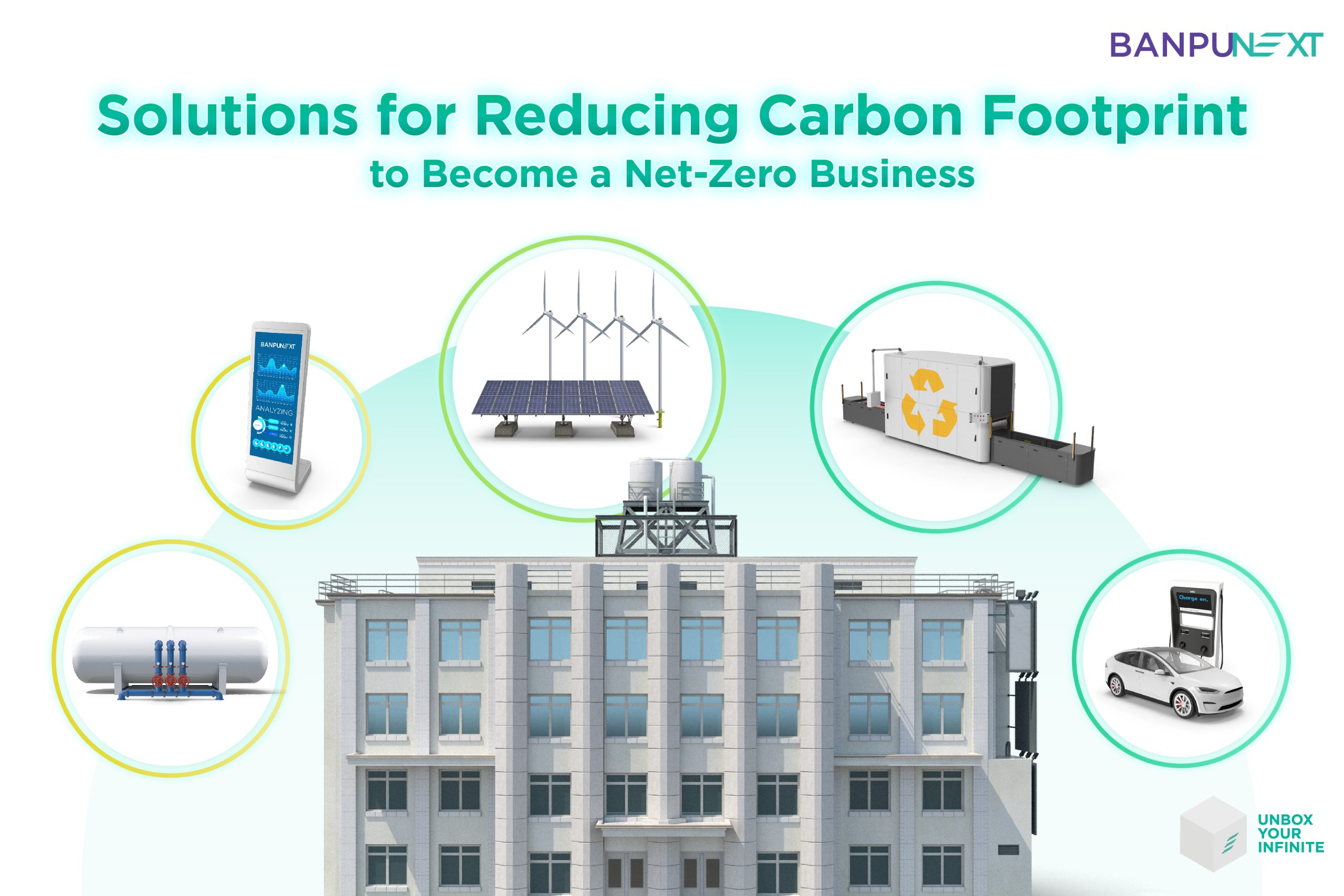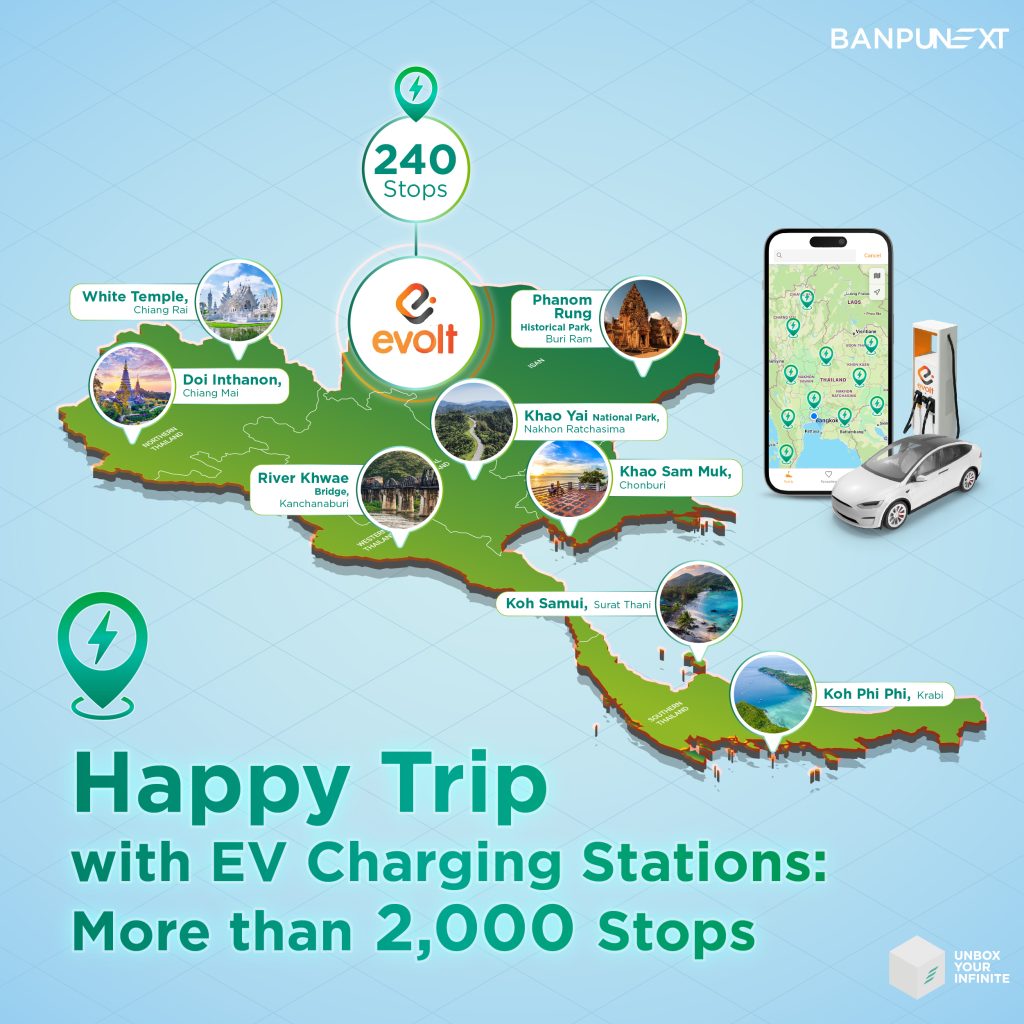According to the 2018 Intergovernmental Panel on Climate Change (IPCC) report, achieving a Net-Zero mission by 2050, which aims to limit global temperature rise to 1.5 °C, requires a 45% reduction in global carbon emissions by 2030. Consequently, many countries worldwide, including Thai industries, have established goals for carbon neutrality. These industries have integrated sustainable strategies into their operations, aligning with global trends and working towards becoming Net-Zero businesses.
The Carbon Footprint for Organizations (CFO) is an evaluation tool that provides a comprehensive overview of an organization’s carbon emissions, representing a crucial initial step toward sustainability.
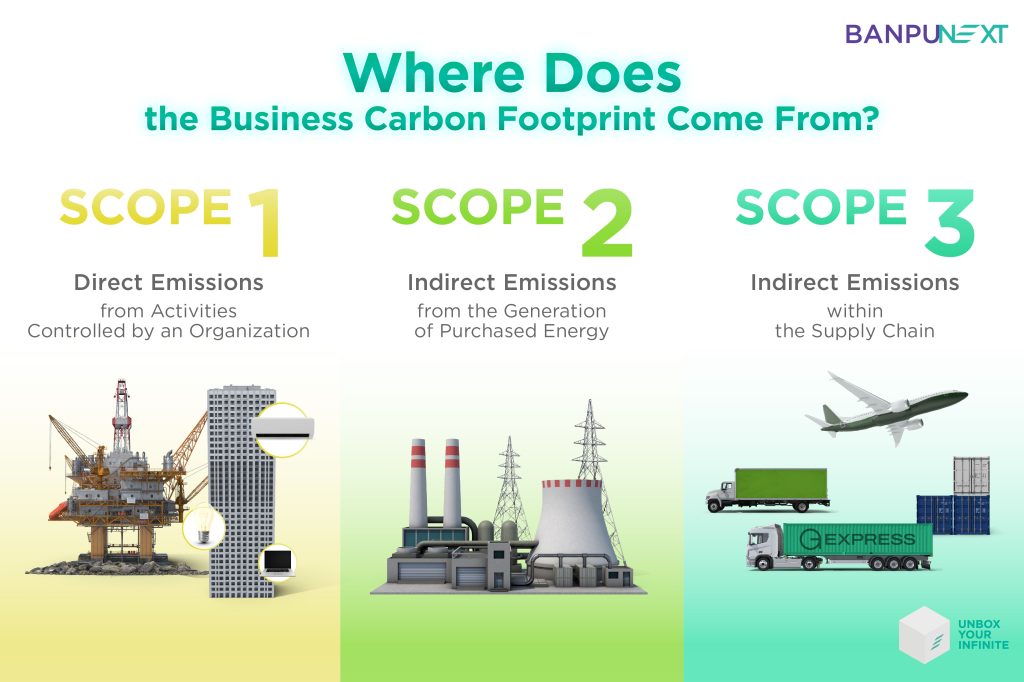
Where Does the Business Carbon Footprint Come From?
A carbon footprint is the amount of greenhouse gas emissions, including carbon dioxide, stemming from organizational activities. In this regard, the sources of a carbon footprint can be divided into three scopes:
Scope 1: Direct emissions from activities controlled by an organization, such as air conditioning in buildings and manufacturing processes in factories.
Scope 2: Indirect emissions from the generation of purchased energy, such as electricity or heat used within the organization.
Scope 3: Indirect emissions within the supply chain, occurring in upstream to downstream activities such as transportation and distribution, waste disposal, and employee commuting.
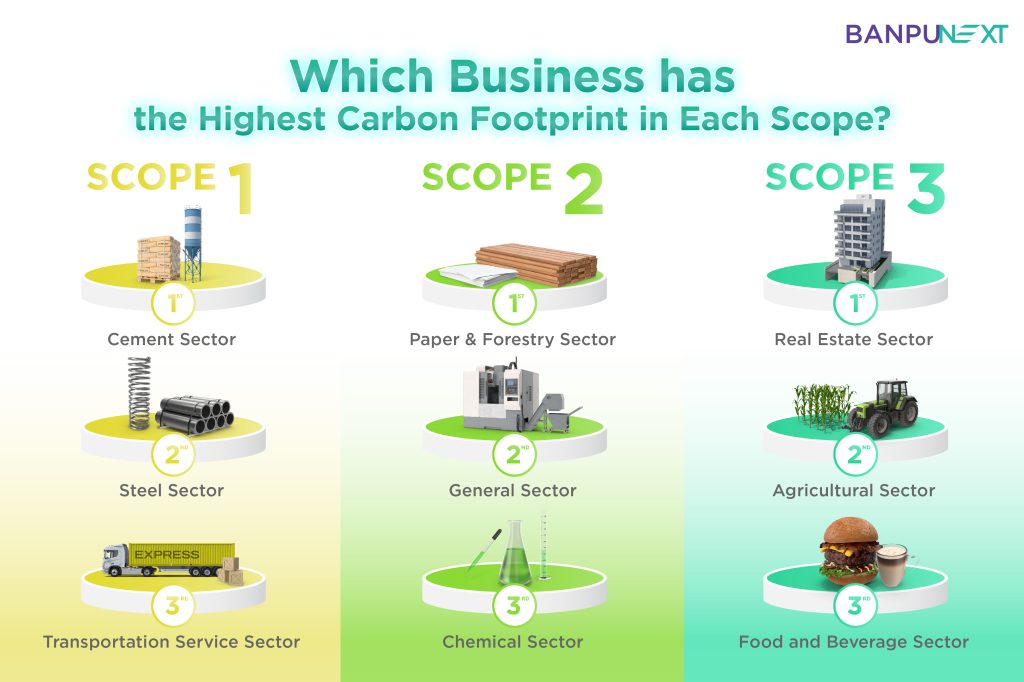
Which Business has the Highest Carbon Footprint in Each Scope?
Different business operations management results in diverse carbon footprint sources. According to the 2023 report from the Carbon Disclosure Project (CDP), it found that:
The top sectors emitting the most carbon in Scope 1 are the cement sector (79%) and the steel sector (67%) primarily due to the use of fossil energy in production. The transportation service sector (64%) is closely followed due to the reliance on fuel vehicles.
In Scope 2, business emissions are comparatively lower, typically averaging only 2-5% compared to other scopes.
In Scope 3, the real estate sector leads in carbon emissions (93%), stemming from construction materials or electricity consumption by building occupants. Following closely are the agricultural sector (92%), rooted in purchased goods and processing products, and the food and beverage sector (87%), influenced by purchased goods and services, transportation, and distribution within the supply chain.
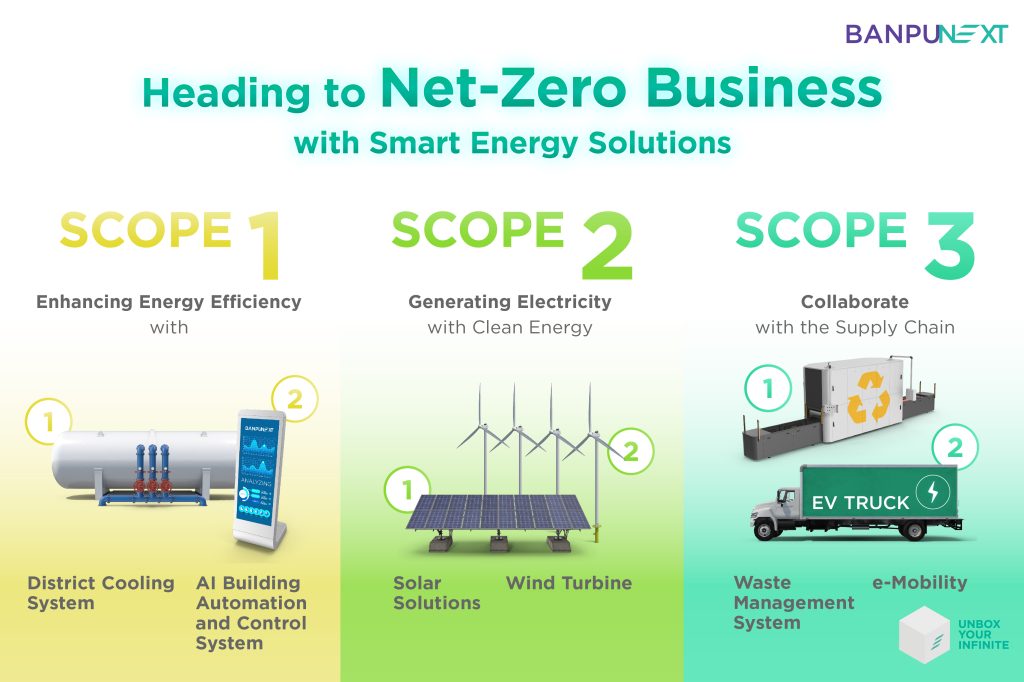
Heading to Net-Zero Business with Smart Energy Solutions
By assessing the carbon footprint, organizations can identify the activities or operations that emit the most carbon. Consequently, businesses can make the decision to choose smart energy solutions, effectively reducing carbon emissions and progressing towards achieving their Net-Zero goals.
Scope 1 : Enhancing Energy Efficiency with Energy Management System
Carbon emissions from the organization are primarily attributed to electricity usage within the building and the production process. Businesses emitting carbon in this scope are advised to consider installing Energy Management Systems, such as AI Building Automation and Control System and District Cooling Systems, to enhance energy efficiency. Furthermore, exploring innovative opportunities, such as the use of electric cars within the factory, can contribute to significant carbon reduction.
Scope 2 : Generating Electricity with Clean Energy, Reducing Cost in Long Term
Organizations can contribute to both carbon emissions reduction and cost savings by transitioning to energy derived from renewable resources, such as solar rooftops, solar floating, or wind turbines. Through Power Purchase Agreements (PPAs) from the private sector, businesses can access these alternative energy sources. For instance, Banpu Next offers comprehensive total Smart Energy Solutions, coupled with a Digital Platform for efficient energy management.
Scope 3 : Collaborate with the Key Suppliers to Create Net-Zero Society
Controlling carbon emissions in the supply chain can be challenging; nevertheless, collaboration among suppliers/partners is a strategic key to achieving this objective. This may involve promoting the use of electric vehicles (e-Mobility) for transportation and travel or implementing waste management systems within the organization.
As a clean energy transition is imperative for reducing carbon emissions in your business, Banpu NEXT strives to be your partner, providing tailor-made solutions for every business towards Net-Zero goals, driving into a Net-Zero society. For inquiries, please contact us at 02-095-6599
#BanpuNEXT #TotalSmartEnergySolutions #NetZeroSociety
Source
- https://www.ipcc.ch/2018/10/08/summary-for-policymakers-of-ipcc-special-report-on-global-warming-of-1-5c-approved-by-governments/
- https://www.britannica.com/science/carbon-footprint
- https://www.nationalgrid.com/stories/energy-explained/what-are-scope-1-2-3-carbon-emissions
- https://cdn.cdp.net/cdp-production/cms/guidance_docs/pdfs/000/003/504/original/CDP-technical-note-scope-3-relevance-by-sector.pdf?1649687608
- https://watchwire.ai/reduce-your-scope-1-2-and-3-emissions

